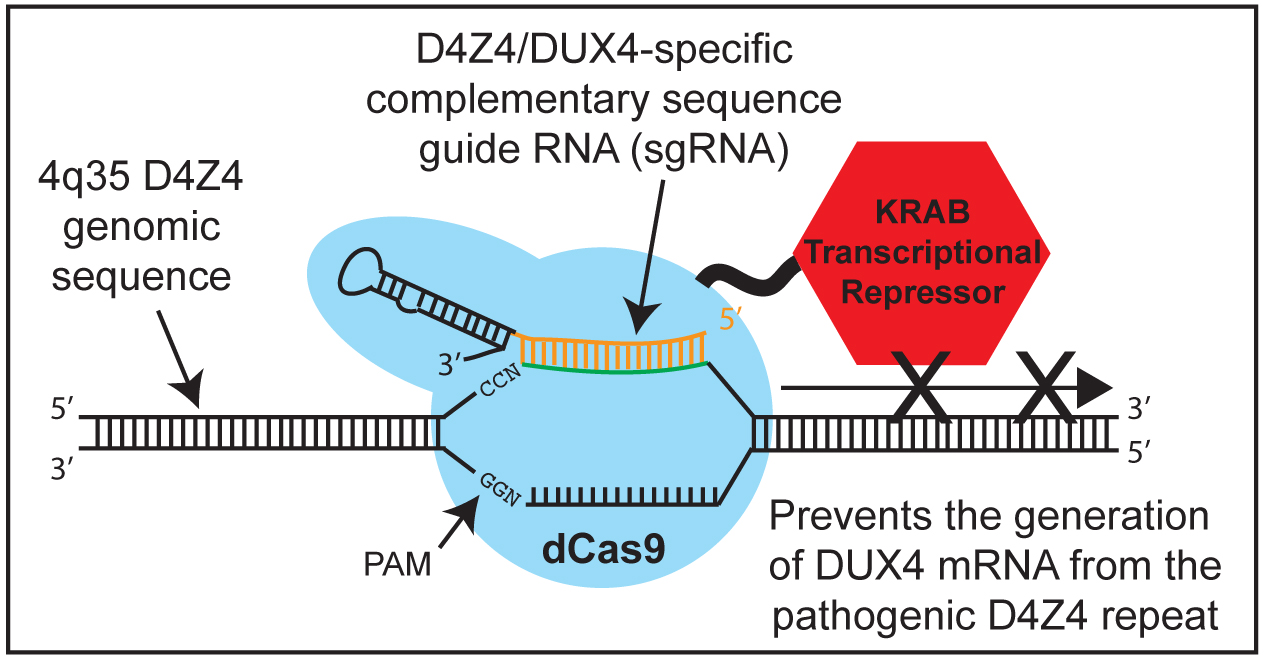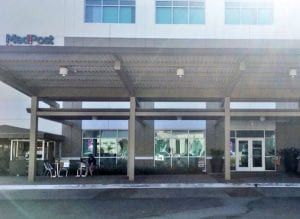The long name comes from facies the Latin word and medical term for face. FSHD is caused by aberrant expression of DUX4 in skeletal muscle resulting in the inappropriate presence of DUX4 protein.
Facioscapulohumeral Muscular Dystrophy Encyclopedia
Facioscapulohumeral muscular dystrophy FSHD is a genetic neuromuscular disorder which mainly affects the muscles of the face shoulder and upper arms.

Fshd muscular dystrophy genetics. This chapter aims to explain the genetics of facioscapulohumeral muscular dystrophy and review the current clinical trials for the treatment. In addition chromosome 4 is tested for the presence of the permissive 4qA allele. This region consists of 11 to more than 100 repeated segments each of which is about 3300 DNA base pairs 33 kb long.
This decision tree above right depicts how FSHD genetic testing is carried out. Facioscapulohumeral muscular dystrophy FSHD is a genetic muscle disorder in which the muscles of the face shoulder blades and upper arms are among the most affected. Normally DUX4-driven gene expression is limited to early embryonic development after which time the DUX4 gene is silenced.
FacioScapuloHumeral muscular Dystrophy FSHD is one of the most prevalent hereditary myopathies and is generally characterized by progressive muscle atrophy affecting the face. In patients with FSHD the DUX4 gene is unsilenced as a result of a genetic mutation. The pathophysiologic consequences of the genetic lesion the loss of a critical number of macrosatellite repeats D4Z4 in the subtelomeric region of.
Facioscapulohumeral muscular dystrophy FSHD is a genetic condition that results from a DNA mutation. Muscles in the face facio- around the shoulder blades scapulo- and in the upper arms humeral. Facioscapulohumeral muscular dystrophy FSHD a progressive myopathy that afflicts individuals of all ages provides a powerful model of the complex interplay between genetic and epigenetic mechanisms of chromatin regulation.
FSHD is generally associated with the contraction of D4Z4 macrosatellite repeats on 4q35 chromosome or mutations in SMCHD1 which are responsible of the toxic expression of DUX4 in muscle tissue. Several new therapies pose a promising solution to this disease with no cure. The remaining 5 percent is called FSHD Type 2 FSHD2 and around 80 percent of these cases are linked to mutations in a gene called SMCHD1.
Facioscapulohumeral muscular dystrophy has been linked to two distinct genetic mechanisms. Facioscapulohumeral muscular dystrophy FSHD is a type of muscular dystrophy a group of heritable diseases that cause progressive and irreversible impairment of musclesFSHD preferentially weakens the skeletal muscles of the face Latin. The genetic test for FSHD2 consists of sequencing a gene called SMCHD1 on chromosome 18 to detect all variants or mutants that have been could contribute to FSHD2.
Type 1 FSHD1 is the more common type of the disorder and is caused by a smaller-than. Facioscapulohumeral muscular dystrophy FSHD is estimated to be the second most prevalent dystrophy after Duchenne muscular dystrophy and affects approximately 870000 people worldwide 2 3. And humerus the Latin word for upper arm.
It particularly affects the muscles of the limbs shoulders and face. FSHD affects approximately one in 10000 to one in 25000 individuals worldwide. Scapula the Latin word and anatomical term for shoulder blade.
The most common found in 95 percent or patients is called FSHD Type 1 or FSHD1. Facio those that position the scapula scapulo and those in the upper arm overlying the humerus bone humeral. Facioscapulohumeral FSHD muscular dystrophy is a genetic muscle-wasting condition that causes muscles to weaken and waste over time leading to increasing disability.
Both types of the disease result from changes in a region of DNA near the end of the chromosome known as D4Z4. This condition gets its name from the areas of the body that are affected most often. Facioscapulohumeral muscular dystrophy is a disorder characterized by muscle weakness and wasting atrophy.
A complex combination of molecular pathways and cell interactions causes facioscapulohumeral muscular dystrophy FSHD. The mutation is a DNA deletion or a decrease in the amount of DNA that is normally present on a chromosome. However the number of individuals with FSHD may be significantly higher because of undiagnosed cases 4.
Facioscapulohumeral muscular dystrophy FSHD a common hereditary myopathy is caused either by the contraction of the D4Z4 macrosatellite repeat at the distal end of chromosome 4q to a size of 1 to 10 repeat units FSHD1 or by mutations in D4Z4 chromatin modifiers such as Structural Maintenance of Chromosomes Hinge Domain Containing 1 FSHD2. PerkinElmer Genomics has launched a new test that is able to accurately detect the shortening of the D4Z4 gene region which causes facioscapulohumeral muscular dystrophy FSHD type 1. Facioscapulohumeral muscular dystrophy is caused by genetic changes involving the long q arm of chromosome 4.
Facioscapulohumeral muscular dystrophy FSHD is one of the most common forms of muscular dystrophy with a distinctive pattern of skeletal muscle weakness and a wide spectrum of disease severity.
